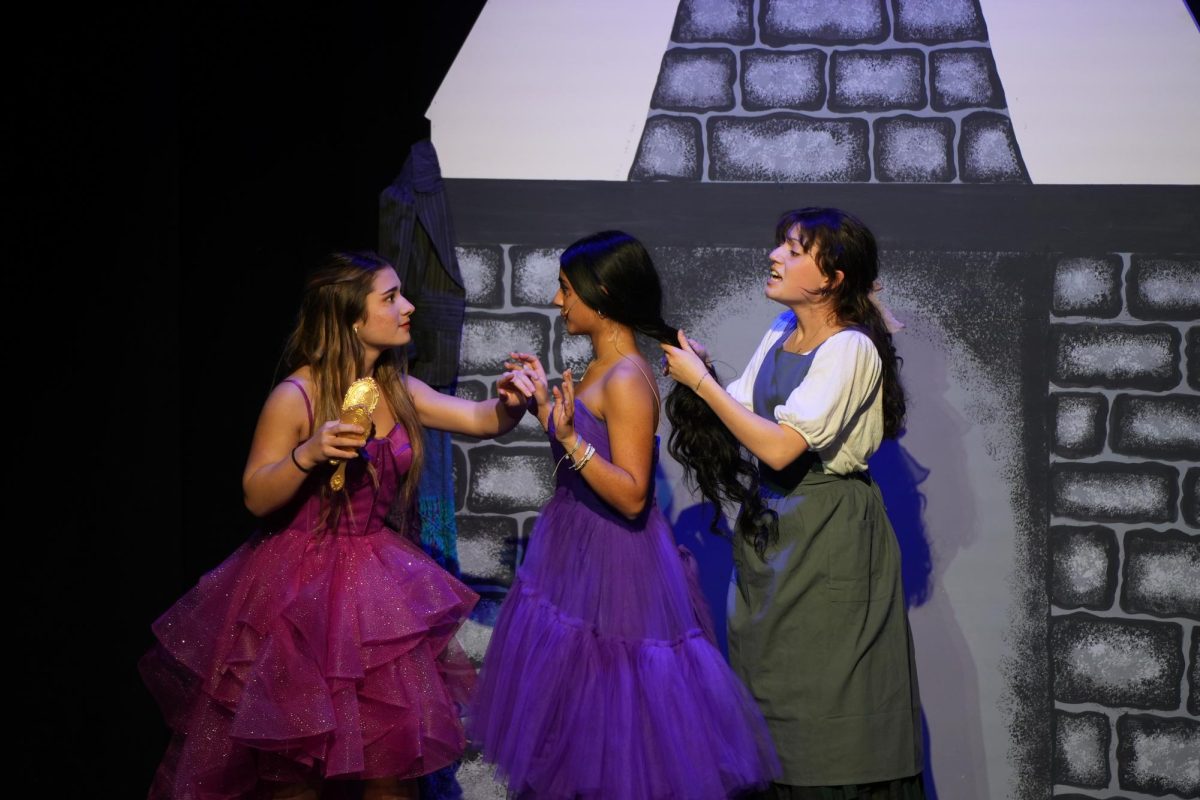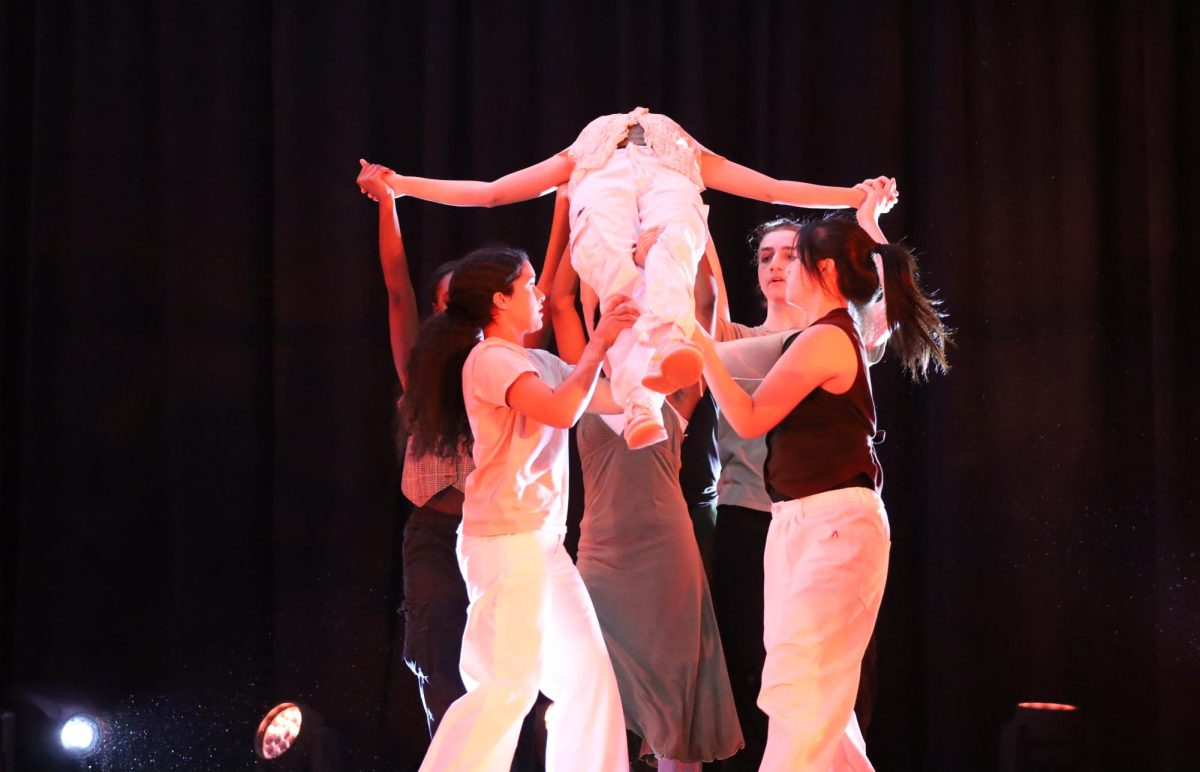Once upon a time, Masters’ Upper School winter musical merged Brothers Grimm fairy tales into an enchanting production of “Into the Woods.” Chock-full with magical tales and ethical quandaries, the production challenged the audience and cast alike to ponder the tale’s moral teachings.
Legendary composer and lyricist Stephen Sondheim wrote the music for the show, which stems from its book version authored by James Lapine.
“I think [Sondheim] does it with such precision. His word choices sometimes are so specific, that I think an intelligent audience really loves the show because you enjoy the word play. You enjoy the complexities of it and the little bits of tricks and threads and things that he weaves in,” Jennifer Carnevale, Chair of the Department of Performing Arts, said.
Almost as soon as the protagonists, the Baker and his Wife, are introduced, the audience is made abundantly aware of the couple’s fruitless wish to have a child. Onlookers tag along throughout the first act as the desperate duo zig-zags through the ominous woods, chasing iconic fairytale characters to secure the ingredients that will lift the Witch’s contraceptive curse: a milky white cow, cloak as red as blood, hair as yellow as corn, and a slipper as pure as gold.
While the Baker and his Wife’s thirst for a child is soon quenched, violent chaos ensues with angered giants, a cheating prince, and a glitzy glow-up for the ugly Witch encourage viewers to ponder moral questions surrounding greed.
Carnevale was a constituent of the casting panel for “Into the Woods” and contributed to the selection of the musical. She said, “I think the real beauty is actually in the second act. The first act is fun, it’s funny and it’s playful. And I love that about it,” she said. “The second act is where you get to see these people that are larger than life have to really live life, and that’s where the lessons are in many ways.”
Aside from being ethically tough to chew, Sondheim’s works are known for their intricacy and practical difficulty. Junior Josie Leff played the role of the Baker’s Wife. “Sondheim is known for having incredibly tricky music. So there’s been a lot of counting out beats, a lot of really weird time signatures and stuff like that. So it is very difficult on a technical level,” she explained.
Sage Weinstock ‘24 had a similar experience: “[Into the Woods] requires a level of vocal power and vocal control I haven’t really done before. So it’s been a really lovely challenge, and I think it’s really pushed me as a musician.” Weinstock embodied the role of The Witch, one of the thorny antagonists.
Leff and Weinstock took the stage alongside other principal characters, Angel Henriquez (The Baker), Elma Intinarelli (Cinderella), Camilo Bitar-Racedo (Jack), Annette Choi (Jack’s Mother), Keira Burgos (Little Red), Aron Tucker (Cinderella’s Prince), Ehimare Ehikioya (Rapunzel’s Prince) and Xavier Rolston (The Narrator).
In order to prepare for her leading role, Leff said, “For me, it’s just thinking about constructing a life for this person that’s even bigger than what we’re given in the text. I’ve worked with Angel, who plays The Baker, and we’ve decided how long our characters have been together and what our life looks like outside of this.”
On top of a robust and dedicated group of actors, “Into the Woods” would not be feasible without a skilled tech team. Lighting, sound engineering and quick costume changes – one of which for Cinderella requires three extra helpers – are all put together by the theater tech co-curricular, costume design class, and other student volunteers. Makeup and costumes are managed by Meg O’Connor, upper school department of performing arts teacher and director of “Into the Woods.”
“I didn’t want to locate it as a European only fairytale because our cast is not simply from European heritage. So there are touches like when Jack’s family gets rich, [his mother] comes out in a traditional Korean dress, and Little Red’s second skirt is a bomba skirt, it’s a traditional Latin American skirt,” she said.
O’Connor pulls clothing from stock, crafts ensembles, and “upcycles” to world-build through the costumes: “There’s a jacket that Jack wears, which was my dad’s work blazer in the 1980s, and I cut the sleeves off and I altered it,” she said.
Dramatic lighting and intricate sound engineering go largely unacknowledged by most audiences. Yet, they are necessary to captivate viewers and lure them into the mythical forest. Willa Hart ‘24 is responsible for calling the hundreds of set cues that are instrumental to the production. These cues tell different tech members to change the hue, lower microphones, and shift the set.
“My hope is it gets people thinking, my hope is that they laugh, my guess is that they may even cry. It’s moving,” Carnevale said.











